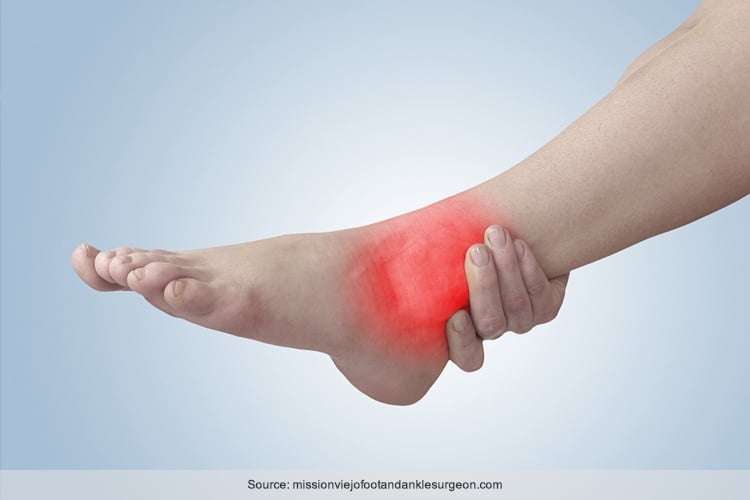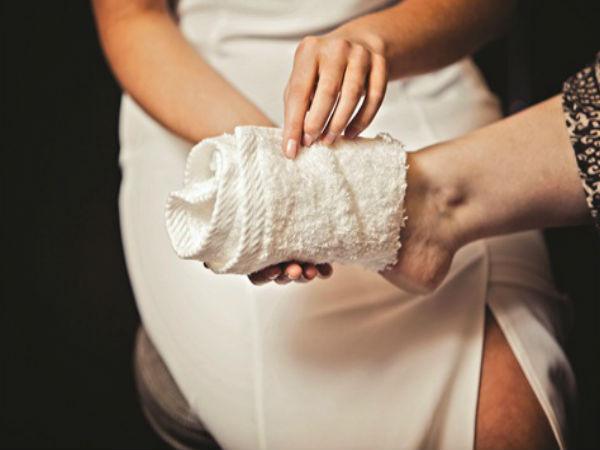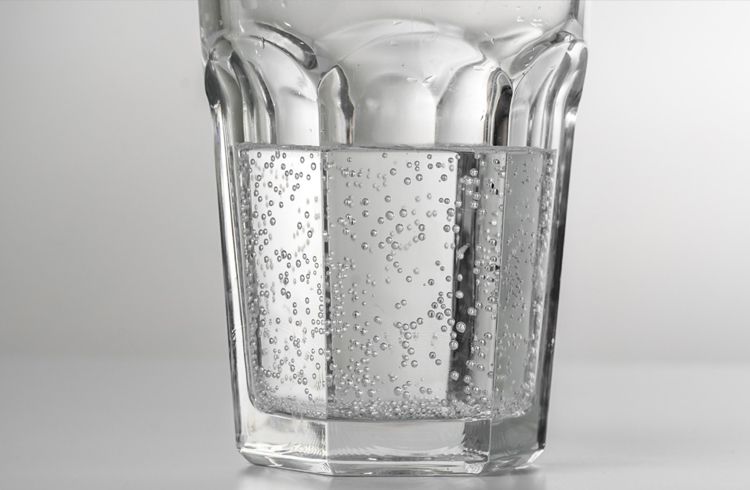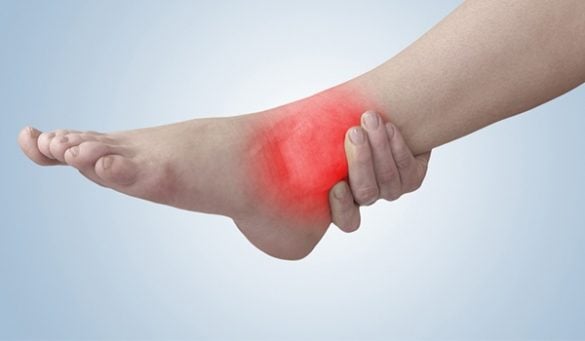
How many of you know of this foot pain? Ever experienced it? What was it like? Very painful and unbearable, isn’t it? It is a common occurrence for all, but affects sportsmen and women more. Even senior citizens can suffer from this foot ailment.
Let us know more about what causes foot tendinitis (also called tendonitis):
What Are Tendons?
To know that, put your hand on the back of your lower leg. That is where you will feel the largest part of your calf muscles. Tendon, connects the skeletal muscles to bones. It is a band (tough one) of fibrous connective tissue which connects muscle to bone. A tendon can withstand tension. But overuse of it, can lead to damage and injury. Let us find out what causes Tendonitis or Foot Tendinitis.
Causes
Did you know the common ‘layman’ terms of tendonitis? There are many – golfer’s elbow, jumper’s knee, pitcher’s shoulder, swimmer’s shoulder, tennis elbow? Anyhow, let’s know the causes of it:
- Abnormal Foot structure: Foot tendinitis gets compounded by problems like flat feet or high arches. They can cause muscular ‘imbalances’, thereby putting all of stress on one or more tendons.
- Trauma: A sudden foot or ankle injury can become the cause of tendinitis. Like for instance, when you are getting into a sudden and powerful activity like Jumping.
- Medical Conditions: There are certain conditions of inflammation like rheumatoid arthritis, gout, etc. which can lead to Achilles tendonitis
- Overuse: This happens when a tendon has been overstretched, and has gone through a small degree of “pulling apart” or “tearing”. Activities such as walking to participating in sports can cause this.
Apart from the above, following activities such as skiing, gardening, tennis, running or walking) on uneven surfaces, football, gymnastics and basketball can quite possibly lead to foot tendinitis (if adequate precautions are not taken). Now let us find out the symptoms that point out to foot tendinitis.
Symptoms
Please make a note of this – the symptoms can vary according to the severity and stage of the tendinitis ailment.
- Pain: When you experience sharp and shooting pain in foot (localized first, which spreads later), it means it is foot tendinitis. The pain hurts first, then subsides and then returns.
- Swelling: This takes a while to develop fully. After few weeks have passed, you may find a soft lump over the tendon (tender to touch). This is mostly found in Achilles Tendon (largest & strongest tendon in the body which is prone to damage by overuse, inflammation and degeneration).
- Stiffness: This is the time when foot and ankle become stiff due to ankle tendonitis. This hampers pain-free movement.
- Redness: At this stage, the affected area becomes hot and red. This limits the free movement of the ankle.
These are painful symptoms and causes. But to ‘nail’ the problem, what you need to know are the various types of food and ankle tendinitis. Take a look:
Types of Foot and Ankle Tendinitis
Our foot has a number of tendons. Non-stop movement and stress on foot can trigger off foot and ankle tendinitis, depending on the extent and severity.
- Achilles Tendonitis: It is the largest tendon in the body. Is used when you walk, run, or jump. Is prone to tendinitis, subject to overuse and degeneration.
- Extensot Tendonitis: General term used when degeneration of the tendon is happening. Is not an acute one, and affects the tendons which pull the foot upwards.
- Peroneal Tendonitis: Rare injury, it is, which can bring pain in the outside of your foot and outside of your lower leg when you run.
- Posterior Tibial Tendonitis: The posterior tibial tendon attaches the calf muscle to the bones on the inside of the foot. When it becomes torn or shows swelling, the pain starts
- Anterior Tibial Tendonitis: This causes pain and swelling in the front of the ankle and into the midfoot.
Let us now know the risk factors associated with Tendinitis:
Risk Factors of Tendinitis
What is a risk factor? It is something which ends up increasing the chances of developing a condition or disease. For eg, obesity raises the risk of type 2 diabetes, which makes it a risk factor.
Similarly, are there any risk factors associated with tendinitis?
Let us find out:
- Age: It is a known fact that with increasing age, the flexibility of tendons decreases. This makes one more prone to injury (and that can happen even with the slightest of jerk or fall).
- Types of jobs: A sedentary type of job is not something that will get you tendinitis. But, there are some types of jobs which might land you in this mess. For eg, when you exert yourself forcefully, do awkward positions, reach overhead frequently, or do movements which become repetitive.
- Sports: It is good to be playing sports. But when you are active at sports that require repetitive movements, including: running, swimming, tennis, bowling, basketball etc. you are more prone to developing tendinitis.
- Diabetes: Studies do not accurately pin-point why diabetics have higher chances of developing foot tendinitis.
- Rheumatoid Arthritis: Like diabetes, people having Rheumatoid Arthritis are at risk of developing tendonitis.
Finally – we are on the most important aspect of this blog. Natural Remedies, which can help you get out of the problem of foot tendinitis.
Home Remedies for Tendinitis
Here are 16 remedies that will bring you relief, from the painful problem of foot tendinitis.
1. RICE Principle
What all you need:
- Rest
- Ice
- Compression
- Elevation
Directions:
- Rest from any physical activity (that increases your pain factor)
- Ice the injured area (by using crushed ice or ice pack in a damp towel) every 2 hours
- Compression of the injured area using a compression bandage (this technique minimizes swelling)
- Elevation of the injured area above the level of your heart
How it works: The RICE therapy works for all musculo-skeletal injuries (such as sprains and strains). During the first 72 hours of injury, it needs to be put into immediate action.
Tip: Olive oil is the best recipe for your tired feet so keep massaging it – to get a soothing effect.
3. Vinegar Wraps
What all you need:
- Vinegar
- Water
- Bowl
Directions:
- Pour same qty. of vinegar and water in a bowl
- Now heat it up a bit
- Transfer the contents into a big bowl
- In another bowl, mix equal quantities of vinegar and cold water.
- Get a cotton towel and soak it in the hot mixture.
- Wrap the treated towel on the foot that’s paining for 10 min.
- Do this 3-4 times a day, and thereafter apply moisturizer
- Repeat this for 3-4 days, in order to get relief from foot tendonitis
How it works: Putting vinegar wraps on the affected foot helps in reducing foot tendinitis.

Source: hindi.boldsky.com
4. Epsom Salt
What all you need:
- 2 tsp Epsom Salt
- Warm water
Directions:
- Put 2 tsp Epson salt in half a bucket of warm water
- Soak your tired and aching feet in this bucket of water for about 20 min
- Epson salt has magnesium sulfate which helps in replacing the lost magnesium in your foot.
- Plus this water mixture helps in immensely soothing your feet
How it works: Epson salt proves to be a good remedy which cuts down on pain and swelling in foot, and foot tiredness as a result of foot tendonitis.
5. Cayenne Pepper
What all you need:
- Cayenne Pepper
- Warm water (plenty)
Directions:
- To start with, add cayenne pepper to half a bucket of warm water.
- Put your feet in this water not for a brief period, but for 15-20 min
- Keep doing this for 5-6 days, so as to reduce the foot pain
How it works: Cayenne Pepper has a natural pain reliever in capsaicin, which provides relief from foot pain. Alternatively, you can sprinkle a bit of cayenne pepper on a cloth and wrap it around on the foot’s affected area
Tip: Do not sprinkle cayenne pepper on open wounds.

Source: authoritynutrition.com
[Also Read: Wonderful Benefits of Cayenne Pepper]
6. Cabbage Leaves
What all you need:
- Cabbage Leaves
Directions:
- Start by soaking few cabbage leaves in a bowl of water for half an hour
- Press the cabbage leaves on the painful area on your feet
- Wrap a cotton cloth around it to hold it in position
- Let it stay overnight for optimum results
- Repeat it for 2-3 days
How it works: Cabbage leaves as a natural remedy gets you good relief from foot inflammation and pain
7. Apple Cider Vinegar
What all you need:
- 2 tsp (organic) ACV
- 1 tsp honey,
- Warm water
Directions:
- Add ACV to a glass of warm water (in the proportion specified)
- Now put in honey
- Drink this solution twice or thrice daily
How it works: Due to its anti-inflammatory properties, ACV is a good remedy to fight foot pain
Tip: Take ACV daily as it promotes good health
8. Flour Treatment
What all you need:
- 2 tbsp flour
- White wine
Directions:
- Mix flour (about 2 tbsp) in the same quantity as white wine.
- Mix it well so that it turns into a paste
- Now apply this paste on the aching feet
- After 30 to 40 min – wash it off with lukewarm water
How it works: Flour is a good remedy to give you relief from foot tendinitis, so try it out
Tip: When you are suffering from foot tendinitis, do not consume flour. On the contrary, you can apply it on the aching feet as a natural remedy.
9. Carbonated Water
What all you need:
- Sugarless Carbonated Water
Directions:
- Organize for yourself a bowl of sugarless carbonated water
- Next, soak your aching foot inside it
- It will not only refresh your foot, it will reduce pain and inflammation in it too
- Do it 2-3 times a day for effective results
How it works: This is an effective remedy which reduces the pain caused by foot tendonitis
Tip: You can also drink carbonated water every day since it is good in health and will help you in keeping your body fresh.

Source: huffingtonpost.in
10. Broccoli Paste
What all you need:
- Broccoli (fresh)
- Some water
Directions:
- Make a paste of broccoli leaves by mixing it with water, and blending it
- Massage this paste on the aching foot
- Put a cotton cloth around the paste (on the foot) so as to hold it firmly
- After 20-25 min, wash it off with lukewarm water
- Do it twice daily for a couple of days
How it works: This helps reduce foot tendonitis problems.
11. Potato Paste
What all you need:
- Big sized potato (one)
Directions:
- Start off by putting a big-sized potato to boil
- Once it cools down – thoroughly mash it
- Now apply it on the affected foot.
- Wrap a clean piece of cotton around the potato mash on foot
- After half an hour is over, wash it off
- Do it daily for 2-3 days
How it works: You will see relief coming your way from foot swelling and pain.
12. Asparagus
What all you need:
- Just Asparagus leaves
Directions:
- All you need to do is consume fresh asparagus (say about 2 or 3) in your daily diet
- This will get you the much-needed relief from foot tendonitis.
How it works: Asparagus is a natural diuretic. It helps in reducing pain, inflammation, and swelling on foot (due to foot tendonitis).
Tip: Remember to eat fresh fish and yogurt as well (when you eat asparagus) as it will help reduce bloating
13. Chickweed
What all you need:
- Chickweed herb
- Water
Directions:
- Make a paste by combining chickweed with water and blending it in a mixer
- Apply this paste over your troubled foot
- Leave it to rest for couple of minutes
- Rinse it off with lukewarm water – once it dries up
- Keep repeating this therapy twice a day for 3-4 days
How it works: This remedy will help reduce pain and swelling of your tendons, muscles, and ligaments.
Tip: Alternatively, you can boil a couple of chickweed herbs in drinking water for a few minutes and drink it several times a day. This helps improve the mobility aspect of your feet and reduce pain.

Source: blog.nutrilawn.com
14. Sage Leaves
What all you need:
- 3-5 fresh sage leaves
- Apple cider vinegar
Directions:
- Take fresh sage leaves and rub them with your palms
- Now transfer the sage leaves in a bowl which has 2/3rds of ACV
- Boil it for few minutes and let it simmer for 5 min
- Turn off the flame and let the solution cool down
- Soak a cotton cloth in this prepared solution
- Wrap it on the affected area of foot for some time
How it works: This remedy helps in healing your foot from pain, and also provides relief from inflammation
15. Turmeric and Garlic Paste
What all you need:
- Turmeric
- Garlic powder
Directions:
- Crush the garlic first
- Now mix turmeric powder with it
- Apply the paste on the affected area on foot
How it works: Turmeric and garlic are known for their anti-inflammatory properties. Which is why, it gives you the much-needed relief from pain and inflammation.
16. Apply Heat
What all you need:
- Hot water bottle
Directions:
- Place the hot water on the painful area on feet
- Keep shifting the position of the hot water bottle, so that no burning happens on skin
How it works: Hot water bottle is of great help as it brings immediate relief, and boosts blood circulation to the affected area
Tip: In order to prevent skin scalding and burning, put a towel underneath the hot water bottle
Let us see other man-made options in fighting tendinitis foot.
Wearing a Splint or Brace
In case of foot pain, you need proper support systems befitting your arch type. And that is where, braces, splints and other forms of support come in to deal with all types of foot pain. What about diet?
Diet for Tendinitis (To Eat and Not to Eat)
A healthy diet won’t cure or prevent foot tendinitis. But, it can surely help manage the symptoms.
- Choose low-fat milk and yogurt over whole milk and ice cream.
- Substitute fatty meats – lamb, steak and skin-on poultry – with leaner options, like skinless chicken breasts, beans and fish
- Eat less of refined grains, and white bread. Opt for low-fiber cereals with whole grains, such as quinoa, popcorn and oatmeal.
- Give up sugary items, like candy, soft drinks and frosted baked goods, and go for fresh fruit, fruit smoothies and baked sweet potatoes.
- Eat healthy fat sources such as olive oil, nuts and seeds.
At what point of time, should one resort to medical advice? Let’s find out:
When To Seek Medical Attention for Tendinitis?
If you have severe pain or immediate bruises after an accident and are not able to use the affected arm or leg, that calls for immediate medical attention. A physical examination will have to be done, following by physical ‘imaging’ to confirm the diagnosis and decide the severity of the rupture.
Possible Complications of Tendinitis
If left untreated, at whatever stage of the foot pain, tendinitis can even lead to “surgical repair”. Other complications include chronic disability, tendon rupture, and adhesive capsulitis (I.e., frozen shoulder).
Prevention and After Care
Considering the severity of foot tendinitis, it is better to follow precautions than suffer later. Here are some options in going about doing that:
- Do not put stress on your muscles and joints (not when you know it can be troublesome later on)
- Before indulging or participating in a workout session, warm up your body first. You need to build the intensity level, rather than give your body a sudden ‘jerk’.
- Before starting a new sport, train yourself in it. You need to gradually build the strength and flexibility in your muscles (for which you will need a few weeks or months)
- Work out regularly (with less gaps), not once a week, as your body goes out of tune and is not able to bear the physical stress.
Although these home remedies will be of great help in reducing foot tendinitis, do give your tired feet “ample” rest. If pain still persists, then do not hesitate in consulting a doctor. I hope you found this piece informative and helpful.
Do write in your comments!
